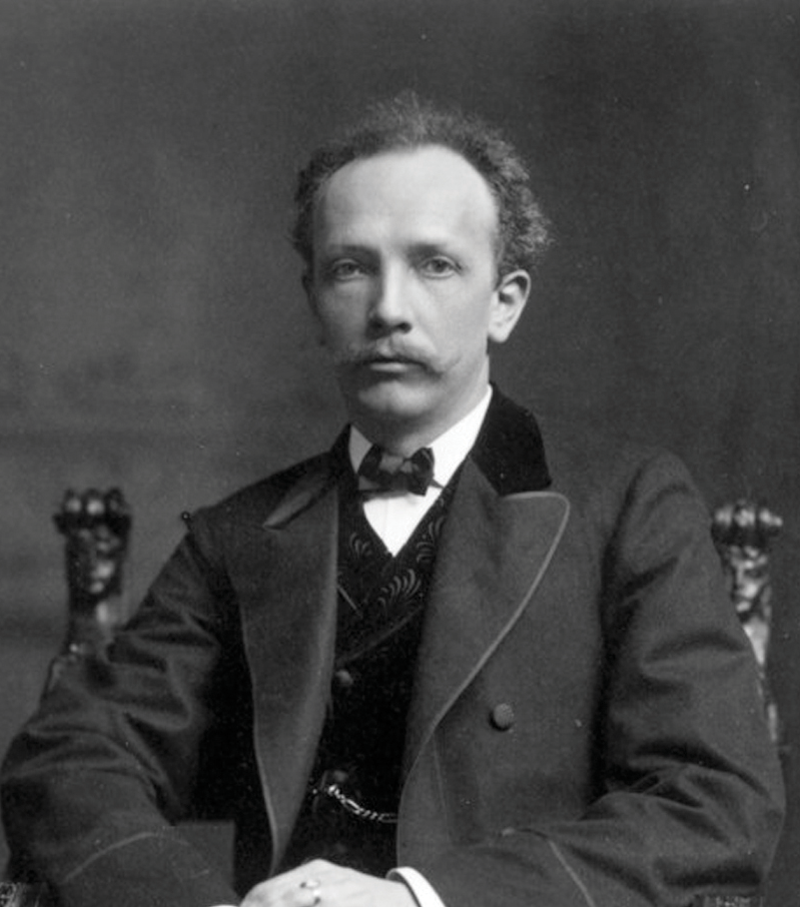Richard Strauss

Born: June 11, 1864, Munich, Germany
Died: September 8, 1949, Bavaria
Der Rosenkavalier Suite, Op. 59
- Composed: 1944–45
- Premiere: (Suite): October 5, 1944, New York Philharmonic-Symphony, Artur Rodziński conducting
- CSO Notable Performances:
- First: October 1944, Eugene Goossens conducting.
- Most Recent: January 2022, François López-Ferrer conducting. CSO Recordings: Strauss: Der Rosenkavalier Suite released in 1995, Jesús López Cobos conducting; Strauss & Strauss released in 1968, Max Rudolf conducting; Strauss: Der Rosenkavalier Suite released in 1945, Eugene Goossens conducting.
- Instrumentation: 3 flutes (incl. piccolo), 3 oboes (incl. English horn), 3 clarinets (incl. E-flat clarinet), bass clarinet, 3 bassoons (incl. contrabassoon), 4 horns, 3 trumpets, 3 trombones, tuba, timpani, bass drum, crash cymbals, glockenspiel, ratchet, snare drum, tambour de Basque, triangle, 2 harps, celeste, strings
- Duration: approx. 22 minutes
The triumph of Richard Strauss’ opera Der Rosenkavalier began at its premiere in Dresden on January 26, 1911, and quickly grew into an international success that continues to this day. It exhibits the mastery of Strauss’ compositional techniques and the seamless artistry of music and libretto created for each other.
At this point in his career, Strauss had honed his orchestral and operatic writing. He had composed all of his tone poems by the end of the 19th century, developing his rich and dramatic orchestral language. As the 20th century began, Strauss turned his attention to opera. His first opera, Guntram (1894), was poorly received, but the later operas proved more successful. Strauss’ second opera was Feuersnot (1901), followed by Salome (1905), which he based on Oscar Wilde’s 1891 play. In Salome, Strauss achieved in his music a level of passion and erotic romance that excited audiences. Elektra (1909) was a darker opera, a Greek tragedy set with 20th-century dissonance. Strauss used a libretto by Hugo von Hofmannsthal (1874–1929), who adapted the story from his earlier play based on Greek mythology and the tragedy by Sophocles.
After Elektra, Strauss wanted to write a lighter opera with a simple story, and thus Der Rosenkavalier was conceived. Der Rosenkavalier marks the first full collaboration between Strauss and Hofmannsthal, as they created the story and music together.
The Der Rosenkavalier Suite captures the essence of the opera’s story through the highlights of Strauss’ orchestral music. It was arranged in 1944, most likely by Artur Rodziński, the conductor of the New York Philharmonic, who conducted the first performance of the Suite in New York on October 5 of the same year. Strauss agreed to the arrangement and production of the Suite, and it was published in 1945.
The Suite demonstrates the power of Strauss’ orchestral writing as it conveys the drama and emotion of Der Rosenkavalier without the words or staging of the opera. It begins with the Prelude, opening just as the opera does with the lush harmonies and passionate horns of the love affair between the Marschallin and Octavian. This intensity transitions to an oboe solo introducing the tender romance of the Presentation of the Rose from Act II. Overlapping melody lines in the oboe, clarinet, bassoon, trumpet and horn replace the words sung by the young lovers when Octavian delivers the rose to Sophie and their love is kindled. One of the opera’s distinctive waltzes follows a brief pause and transition, characterizing Baron Ochs and his pursuit of Sophie. A solo violin carries the melody with light accompaniment before the full orchestra joins in the waltz. The music returns to the gentler romance of Octavian and Sophie in a wordless rendition of the opera’s famous Trio and ensuing Duet. Again, layered melodies in the violin and oboe, flute, clarinet and horn take the place of the opera’s words as the Marschallin makes her bittersweet decision to end her affair with Octavian, and Octavian and Sophie express the joy of their love allowed to flourish. The Suite concludes with another waltz, returning to the boisterous and lively energy that fuels the comedy of the opera.
—Dr. Rebecca Schreiber